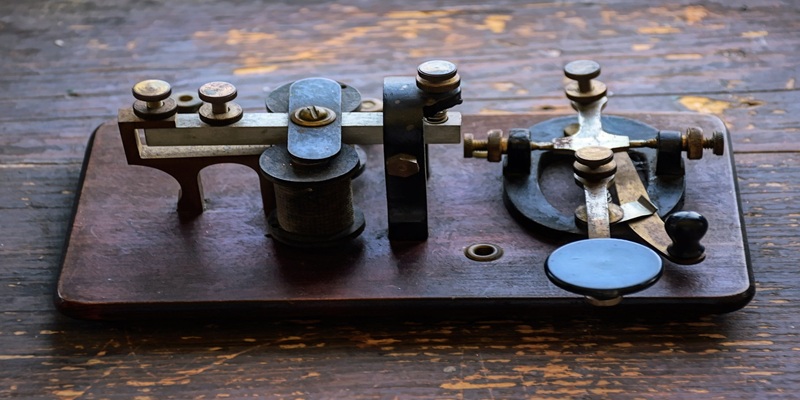The telegraph stands as one of the most groundbreaking inventions in human history. Before its arrival, communication was painfully slow, relying on messengers, letters, or physical travel. The telegraph changed everything by enabling near-instantaneous long-distance communication. This innovation not only transformed business and politics but also laid the foundation for modern telecommunications.
The Birth of the Telegraph: A Leap in Communication Technology
Before the telegraph, sending a message across long distances took days, weeks, or even months. Ships, horses, and human couriers were the primary means of delivering information. However, the 19th century brought a wave of innovation, and the telegraph emerged as a game-changer.
Samuel Morse, along with other inventors like William Cooke and Charles Wheatstone, played a crucial role in developing the telegraph. Morse’s version, which used electrical signals to transmit coded messages (Morse code), became the most widely adopted system. By the mid-1800s, telegraph lines spanned continents, shrinking the world in ways previously unimaginable.
How the Telegraph Worked: Breaking Down the Technology
The telegraph operated on a simple yet brilliant principle: electrical impulses transmitted over wires could convey messages. Here’s a breakdown of its key components:
- The Transmitter: The operator pressed a key to complete an electrical circuit, sending pulses down the wire.
- The Wire Network: Miles of insulated cables carried signals between stations.
- The Receiver: At the other end, an electromagnet recorded the pulses as clicks or marks on paper.
- Morse Code: Dots and dashes represented letters and numbers, allowing complex messages to be sent efficiently.
This system was revolutionary because it eliminated the need for physical transportation of messages. For the first time, news could travel faster than a speeding train.
The Telegraph’s Impact on Society and Business
The telegraph didn’t just speed up communication—it reshaped entire industries. Businesses, governments, and the media were among the first to harness its power.
Transforming Commerce and Trade
Before the telegraph, merchants relied on slow correspondence to conduct business. Prices, orders, and market trends took days to relay. With the telegraph, stock exchanges, banks, and trading firms could react to information in real time. This efficiency boosted global trade and economic growth.
Revolutionizing Journalism and News
Newspapers quickly adopted the telegraph to receive breaking news from distant locations. Events like wars, elections, and disasters could now be reported almost instantly. This shift gave rise to modern journalism, where timely updates became the norm.
Strengthening Military and Government Operations
Governments used the telegraph to coordinate military strategies and administrative tasks. During wars, commanders could send orders across battlefields without delays. Diplomats also benefited, as treaties and negotiations no longer required weeks of waiting.
The Telegraph vs. Modern Communication: A Lasting Legacy
While the telegraph itself is now obsolete, its influence persists in today’s digital world. Many principles of telegraphy paved the way for telephones, the internet, and wireless communication.
From Telegraph to Telephone
Alexander Graham Bell’s telephone expanded on the telegraph’s concept by transmitting voice instead of coded signals. The idea of instant communication remained, but with greater accessibility.
The Internet: The Ultimate Successor
The internet operates on the same foundational idea—sending data across vast distances at lightning speed. Emails, messaging apps, and social media are all descendants of the telegraph’s innovation.
Wireless Communication and Beyond
Radio, mobile phones, and satellite communication all trace their roots back to early telegraphy. The concept of encoding and transmitting information remains central to modern tech.
Conclusion
The telegraph was more than just a machine—it was a revolution. By breaking the barriers of time and distance, it reshaped how humans interacted, conducted business, and governed nations. Though newer technologies have replaced it, the telegraph’s legacy lives on in every text message, email, and video call we make today. As we look back, it’s clear that the telegraph didn’t just change communication—it changed the world. And in doing so, it set the stage for the interconnected digital age we live in now.
Would modern life be the same without it? Almost certainly not. The telegraph was the spark that ignited the flame of global connectivity, and its impact will never be forgotten.































